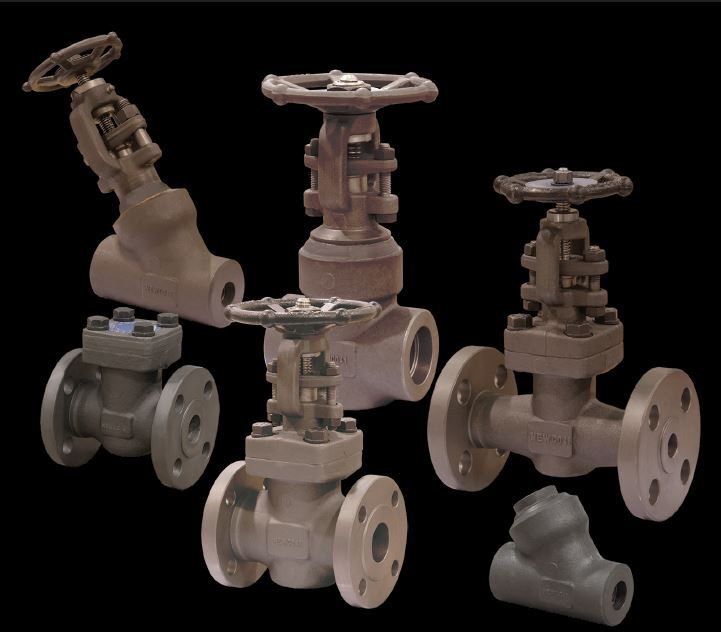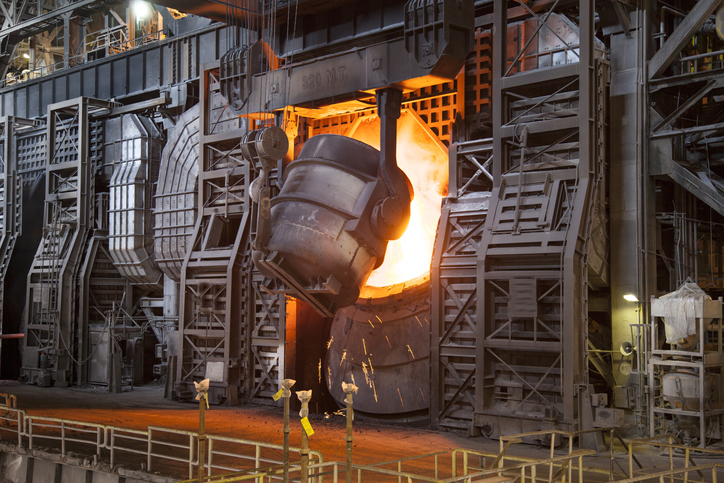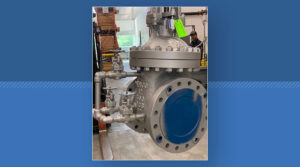
Cast Versus Forged Valves
Valves are indispensable parts of any industrial system, but they are not all made the same way. Of all the methods, the most popular for making high-quality industrial valves are casting and forging. Thus, it is common to have engineers and product designers deliberating on which of these two will be suitable for an application. In this article, we explore the advantages of each of them, as well as compare the features of cast versus forged valves.
Cast Valves
The manufacturing of cast valves involves smelting metal and pouring it into a mold. Once it cools and solidifies, it is broken or ejected from the mold. Utilizing this method for valve manufacturing is beneficial in several ways including:
-
- Cost-Effective Production: Casting is a cost-effective approach to valve manufacturing as it allows for large-scale production of items. Also, using cast valves means far less machining costs in comparison to forged valves.
-
- Material Options: Casting offers flexibility to use a variety of metals and alloys, which may not be possible using other means like forging.
-
- Versatility in Design: Because of the use of molds, it is possible to make valves with intricate and complex designs, patterns, and sizes.
-
- Short Lead Times: When minimizing downtime is critical in any facility, cast valves are better than most options in quickly producing replacement parts.
Types of Casting
There are different methods of casting for valve production, but this section reviews the most common which are sand and investment casting.
Sand Casting
Sand casting is the most common method of casting, especially for making steel valves. It entails fitting the molded design for the valve to the bottom of the sandboxes. Then boxes packed with sand are forcefully pushed into the molds, such that the mold leaves an impression on the sand.
Subsequently, the boxes are flipped upside down to remove the molded designs. Next, two parts of the sandbox fit on top of each other and bolted together. As molten steel pours on top of the sandboxes, it seeps through the holes in the top of the bolted boxes, and the sandbox cools. After cooling, unbolting and removal of the sandboxes reveal the valve component. Surface finishing occurs to meet roughness requirements. Sand casting is ideal for making larger valve components but is a more expensive casting method.
Investment Casting
Investment casting is the go-to method for producing smaller, more accurate valve components. It is also a more cost-effective method than sand casting. The process involves making a first mold using hard wax, lost wax, lost foam, or similar material. Then, dipping this wax mold in a thick layer of wet ceramic slurry. After curing, the wax melts, leaving the ceramic mold behind. Subsequently, the ceramic mold heats to about 1000℃ to remove any leftover wax or moisture, before the pouring of molten metal. Usually, this method can create valve parts weighing up to 100 kg and a maximum length of 1.6m.
Forged Valves
Unlike cast valves, making forged valves entails shaping metals or alloys while in solid form. To achieve this, industrial tools provide compressive pressure to bend the material, while dies usually serve in shaping and cutting into specific valve components. When forging valves, it is necessary to exceed the elasticity limit of the material but not exceed its strength limit. Therefore, only ductile materials, which have these two limits sufficiently far apart, are suitable for this process. The benefits of manufacturing valves using this process include:
-
- Strength and Durability: During forging, the metal’s grain structure stretches, thus, making it homogeneous. As a result, these valves have better mechanical properties such as higher tensile and yield strength, so are less prone to failure.
-
- Resistance to Fatigue: The forging process removes internal voids and gas pockets, which reduces the likelihood of fatigue failure, as well as enhances the valve’s reliability over time.
-
- Temperature Resistance: Because forging produces valves with thinner walls, there is a lower possibility of heat fatigue during valve work. This implies that forged valves can cool and heat faster, which enables them to withstand the strains of systems that frequently undergo startup and shutdown cycles. Also, they are suitable for extreme temperature operating conditions.
Methods of Forging

The methods of forging valves are classified either according to the temperature at which forging occurs or on the method used in shaping the components. Methods of forging in line with temperature requirements include:
-
- Cold Forging: This method involves shaping metals without applying any additional heat. As a result, the metal possesses lower malleability, requiring greater mechanical force to shape it.
-
- Warm Forging: Applied heat within the range of 800 to 1000℃ makes the metal more ductile, which requires less force during shaping than in cold forging.
-
- Hot Forging: Metal undergoes heating to above 1000℃ but less than 1300℃, which makes it so ductile that only moderate pressure is needed in shaping.
As for classification according to the method of shaping, the methods include:
-
- Open Die Forging: Open die forging is suitable for both small items and large metal pieces, as the dies do not completely enclose the metal. The process provides extra durability and allows for safe human operation. Common shapes ideal for this method include discs, rings, cylindrical, and contours.
-
- Closed Die Forging: This method entails enclosing the metal part completely and is ideal for making more precise shapes. Also, it is suitable for making smaller parts in large quantities.
Choosing Between Cast vs Forged Valves
Making the choice between using cast versus forged valves depends on the application and several factors, which the following table highlights.
| Parameter | Cast Valves | Forged Valves |
| Strength and Durability | The process of solidifying cast valves sometimes leads to impurities such as voids and cracks in the valve. This results in lesser mechanical properties, so this valve type is not ideal for high-pressure and high-temperature applications. | The forging process aligns the metal’s grain structure, thus producing a more resilient material. So, they are the go-to option for handling harsh chemicals, extreme temperatures, and high pressures without failing. |
| Size and Versatility | Effective in producing a variety of valve sizes and intricate shapes. | Ideal for smaller valve sizes, generally below DN50. Can serve for larger sizes but will need to be developed in parts and connected by welding or flanges. This increases the risk of leakage. |
| Cost and Production | Labor costs are a lot less and valves can be manufactured in large batches, which is cost-effective. However, many materials and equipment are required for casting, and the process produces substances that can pollute the environment. | The manufacture of forged valves is cost and energy intensive. Labor costs take up a huge chunk of the expenses as the valve parts undergo significant machining. In addition, they are made in smaller batches in comparison to cast valves. |
| Surface Finish | The forging process aligns the metal’s grain structure, thus producing a more resilient material. So, they are the go-to option for handling harsh chemicals, extreme temperatures, and high pressures without failing. | The forging process produces a more refined surface finish, so there is less need for extensive post-forging machining. |
| Lead Time | Cast valves are the preferable option when time is a critical factor. | Although they have better performance, production time is longer. |


